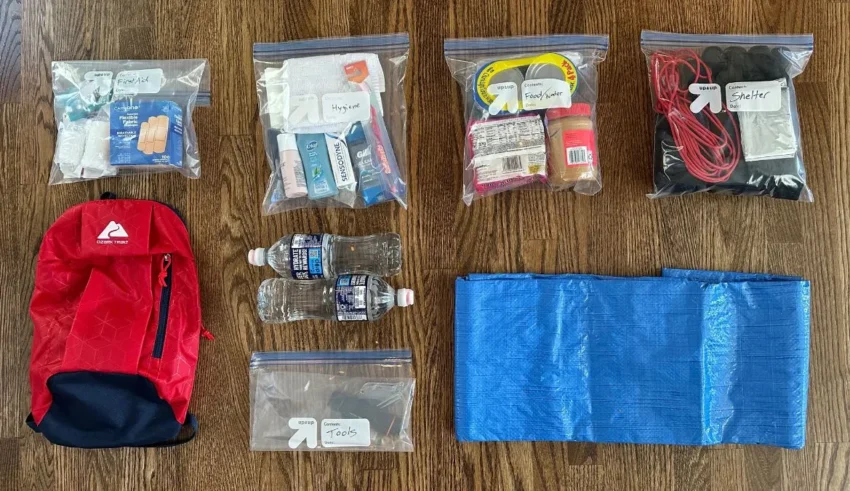
Walk into any homeless shelter and there’s a good chance someone will ask for a toothbrush within the first ten minutes. Or shampoo. Or socks. These requests seem simple on the surface, but keeping those everyday essentials consistently available takes planning, coordination, and resources that most people never think about. Dignity kits – those bundles of basic hygiene items that help people maintain self-respect during impossibly difficult times – don’t just magically appear on shelter shelves.
The reality is that shelters face a constant balancing act. Demand never stops, donations fluctuate wildly, and budgets stay tight year after year. Yet somehow, most facilities manage to keep distributing these critical supplies day after day. How they pull this off involves a mix of strategic planning, community partnerships, and some hard-learned lessons about what actually works versus what sounds good in theory.
Table of Contents
Understanding What Goes Into Dignity Kits
The contents of these kits vary by facility and population served, but the basics stay pretty consistent. Toothbrushes and toothpaste, travel-size soap and shampoo, deodorant, razors, sanitary products for women, combs, and wet wipes form the core of most packages. Some shelters add extras when they can – hand sanitizer, lip balm, tissues, or small first-aid items.
Here’s the thing though – these aren’t luxury items or nice-to-haves. They’re fundamental to human dignity. Someone living in a shelter still needs to go to job interviews, visit social service offices, or simply interact with the community. Being able to brush teeth, shower with soap, and maintain basic cleanliness matters enormously for mental health and practical life functioning.
Shelters typically distribute hundreds of these kits monthly. A mid-sized facility serving 100-150 people might go through 200-300 individual items per week just on the basics. Multiply that across a year and the scale becomes clear. That’s why the typical approach of relying on sporadic donations and retail shopping doesn’t cut it for organizations serious about consistent service.
The Donation Rollercoaster Problem
Public donations spike hard around Thanksgiving and Christmas. Everyone wants to help during the holidays, which is genuinely appreciated. The problem is what happens in February, March, and July when those generous impulses fade but people experiencing homelessness still need the same supplies.
Shelters end up with storage rooms overflowing in December and nearly empty shelves by spring. This inconsistency creates stress for staff who never quite know if they’ll have what’s needed next month. It also means turning people away or rationing supplies during lean periods – exactly when demand often increases due to summer heat or winter cold requiring more frequent showers and hygiene maintenance.
Another challenge with public donations is the mismatch between what people give and what’s actually useful. Well-meaning donors contribute hotel-size bottles that are too small for practical use, or products that don’t meet basic needs. Sorting through donation boxes takes staff time that could be spent helping residents, and disposing of unusable items costs money.
Strategic Supply Management That Actually Works
Successful shelters have shifted toward a hybrid model that combines community donations with planned bulk purchasing. This approach smooths out the ups and downs while making budgets stretch further. When facilities know they can count on a baseline supply level, they can accept donations as helpful additions rather than depending on them entirely.
Bulk ordering transforms the economics of shelter operations. Resources such as Bags in Bulk Canada have become essential partners for shelters looking to maximize their purchasing power while maintaining consistent inventory levels throughout the year. The cost difference between retail and bulk for hygiene essentials often means helping twice as many people with the same funding.
A travel-size shampoo bottle at a drugstore might cost $1.50-2.00. Through bulk suppliers, that same bottle runs $0.40-0.60. Toothbrushes drop from $2-3 each to under a dollar. These differences add up fast when multiplied across hundreds of kits monthly. The savings free up budget dollars for other critical needs – meals, facility maintenance, case management services, or emergency assistance.
Building Inventory Systems That Prevent Shortages
Smart shelters treat supplies like any business manages inventory. They track usage patterns, identify seasonal fluctuations, and maintain minimum stock levels that trigger reorders before running out. This sounds obvious, but many smaller facilities operate more reactively, ordering only when shelves look bare.
Setting up these systems doesn’t require fancy software or expensive consultants. A basic spreadsheet tracking weekly usage by item type provides enough data to spot trends and plan ahead. After a few months, patterns emerge – maybe deodorant runs out faster in summer, or razor demand increases when the weather improves and people start job hunting more actively.
Buffer stock matters too. Keeping an extra month’s worth of core items on hand protects against supply chain delays, unexpected demand spikes, or budget timing issues. That cushion turns potential crises into minor inconveniences.
Partnerships That Keep Things Running
Many shelters have developed relationships with local businesses and civic groups that commit to regular monthly donations rather than one-time drives. A dentist’s office might provide toothbrushes and toothpaste quarterly. A salon could contribute combs and basic hair products. These ongoing partnerships create predictable supply streams that staff can build around.
Grant funding specifically designated for operational supplies also helps. While donors often prefer funding programs over “boring” essentials, shelter administrators who clearly explain the connection between basic supplies and successful outcomes can sometimes secure dedicated hygiene supply budgets.
Some facilities have also started small social enterprises where residents package dignity kits as part of job training programs. This serves multiple purposes – building work skills, creating purpose and routine, and handling the assembly work that otherwise takes staff time.
The Dignity Factor Nobody Wants to Discuss
There’s an uncomfortable truth about how supply availability affects shelter environments. When hygiene supplies run short, tensions rise. People get desperate and hoard items when they can. Conflicts break out over access to limited resources. Staff spend energy managing scarcity instead of helping residents move forward.
Consistent supply availability completely changes this dynamic. When everyone knows toothpaste will be there next week, the anxiety disappears. Residents focus on bigger goals – finding housing, maintaining sobriety, securing employment – instead of worrying about basic survival needs.
This is where the “dignity” part of dignity kits really hits home. Providing these supplies reliably sends a message that people matter and deserve basic respect regardless of their circumstances. It’s a small thing that carries enormous weight for someone whose life has fallen apart.
Planning for the Unexpected
Shelters also need contingency plans for genuine emergencies. A cold snap that sends outdoor populations inside, a nearby facility closing suddenly, or a local disaster can double or triple normal demand overnight. Having relationships with bulk suppliers who can rush orders or having emergency funds set aside for supply purchases prevents these situations from becoming full-blown crises.
Some shelter networks coordinate regional supply sharing, where facilities with excess inventory can quickly transfer items to locations experiencing shortages. This requires trust and coordination but creates resilience across the entire system.
Making Every Dollar Count
At the end of the day, keeping dignity kits stocked year-round comes down to treating shelter operations with the same seriousness as any organization managing limited resources toward critical goals. That means strategic purchasing, inventory management, diverse funding streams, and community partnerships all working together.
The families and individuals walking through shelter doors don’t need to know about bulk ordering strategies or inventory systems. They just need to know that when they ask for a toothbrush, there’s one available. That simple reliability, maintained month after month regardless of season or donation cycles, represents countless hours of behind-the-scenes work that makes dignity possible when people need it most.













